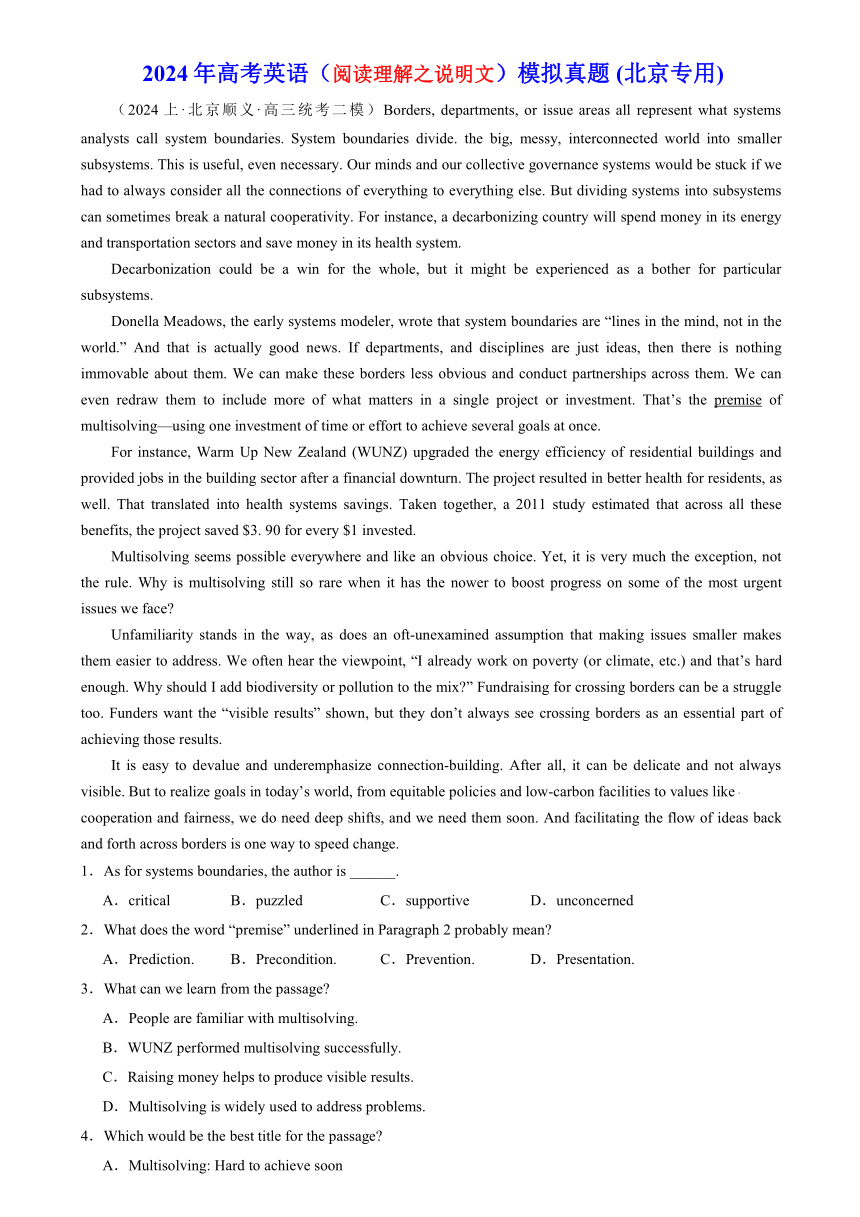
2024年高考英语(阅读理解之说明文)模拟真题 (北京专用) (2024上·北京顺义·高三统考二模)Borders, departments, or issue areas all represent what systems analysts call system boundaries. System boundaries divide. the big, messy, interconnected world into smaller subsystems. This is useful, even necessary. Our minds and our collective governance systems would be stuck if we had to always consider all the connections of everything to everything else. But dividing systems into subsystems can sometimes break a natural cooperativity. For instance, a decarbonizing country will spend money in its energy and transportation sectors and save money in its health system. Decarbonization could be a win for the whole, but it might be experienced as a bother for particular subsystems. Donella Meadows, the early systems modeler, wrote that system boundaries are “lines in the mind, not in the world.” And that is actually good news. If departments, and disciplines are just ideas, then there is nothing immovable about them. We can make these borders less obvious and conduct partnerships across them. We can even redraw them to include more of what matters in a single project or investment. That’s the premise of multisolving—using one investment of time or effort to achieve several goals at once. For instance, Warm Up New Zealand (WUNZ) upgraded the energy efficiency of residential buildings and provided jobs in the building sector after a financial downturn. The project resulted in better health for residents, as well. That translated into health systems savings. Taken together, a 2011 study estimated that across all these benefits, the project saved $3. 90 for every $1 invested. Multisolving seems possible everywhere and like an obvious choice. Yet, it is very much the exception, not the rule. Why is multisolving still so rare when it has the nower to boost progress on some of the most urgent issues we face Unfamiliarity stands in the way, as does an oft-unexamined assumption that making issues smaller makes them easier to address. We often hear the viewpoint, “I already work on poverty (or climate, etc.) and that’s hard enough. Why should I add biodiversity or pollution to the mix ” Fundraising for crossing borders can be a struggle too. Funders want the “visible results” shown, but they don’t always see crossing borders as an essential part of achieving those results. It is easy to devalue and underemphasize connection-building. After all, it can be delicate and not always visible. But to realize goals in today’s world, from equitable policies and low-carbon facilities to values like cooperation and fairness, we do need deep shifts, and we need them soon. And facilitating the flow of ideas back and forth across borders is one way to speed change. 1.As for systems boundaries, the author is _____. A.critical B.puzzled C.supportive D.unconcerned 2.What does the word “premise” underlined in Paragraph 2 probably mean A.Prediction. B.Precondition. C ... ...
~~ 您好,已阅读到文档的结尾了 ~~

